Part Time Course
Tuesday and Friday Mornings
9.00am-12.30am
Total of 40 weeks of tuition
Deposit = £200
Cost = £975 per term (3 terms per course)
Limited to 10 Students
£200.00
6 in stock
Part Time Course
Tuesday and Friday Mornings
9.00am-12.30am
Total of 40 weeks of tuition
Deposit = £200
Cost = £975 per term (3 terms per course)
Limited to 10 Students
6 in stock
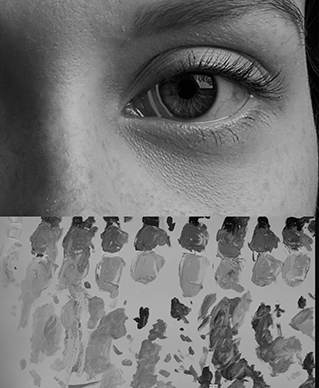
Morning Online Portrait Painting Course 2024/25
Before starting the course, we will run a few mock-up lessons to make sure that everything is set up well and runs smoothly.
Take your skills to the next level this year and learn the traditional techniques of classical realist art. The portrait painting course will teach you tried and tested methods going back to the Renaissance.
The course is now split into two half-day classes of 3.5 hours per class. Dividing the class into two days is more manageable for students’ energy levels. Students get to check in twice a week which can help to keep them on the right path with their course work.
Cost
£975 per term (3 terms per course)
Deposit
£200 and the remaining balance of £775 is to be paid 3 weeks before the start of the Academic Year. Details will be sent in the confirmation email.
Timetable
One year academic studies 2024-2025.
Tuesdays and Fridays 9.00am-12.30am
Total of 40 weeks of tuition
Terms
1st Term
13th Sep – 18th Oct | Half Term | 29th Oct – 20th Dec 2024
Christmas Break
2nd Term
3rd Jan – 7th Feb | Half Term | 18th Feb –11th April 2025
Easter Break
3rd Term
22nd April – 23rd May | Half Term | 3rd June – 18th July 2025
Colour
The Online Portrait Painting Course is divided into two parts. The first part is Tone, the second part is Colour. The second part of the programme will focus on the theory and practical application of colour. We will be exploring the Full Colour Palette which lends itself well to the Alla Prima style of painting, giving it a fresh vibrant look.
The study of masterpieces is the quickest way to develop a visual vocabulary. During this term we will be looking at some of the modern masters of the Alla Prima technique to help us deal with the complexities of the full palette.
Through studying the masters and applying what we have learned we can start to develop our own style as a portrait artist.
Tutor
Louis Smith is a classically trained portrait painter who studied in Florence for three years. A painter of bespoke portraits he undertakes various commissions ranging from individuals through to families and professionals. To see some examples of his work go to louissmithart.com
Daily Schedule
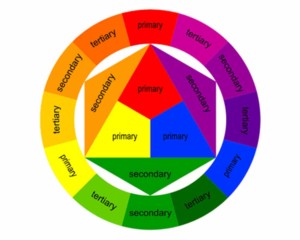
Lesson
Lesson = Understanding Colour. Hue, chroma and value explained. Deeper knowledge of complimentary colour and colour temperature.
Exercise = Colour wheel, mixing secondary and tertiary colours from primary colours. Mixing flesh tones, high chroma – low chroma, warm and cool.
Model = No Model.
Homework = Practice colour mixing exercises.
Outcome
Students will learn:
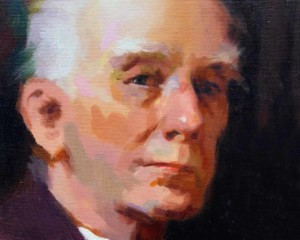
Lesson
Lesson = Richard Shmid is a modern day master of Alla Prima portraits, the aim of this study is to emulate his loose high chroma style.
Exercise = Study a Richard Schmid portrait painting observing the use of colour, strokes and accuracy.
Model = Apply what we have learned with the Model.
Homework = Study Richard Shmid Portrait. Paint a portrait in similar style either sitter or photo reference.
Outcome
Students will learn:
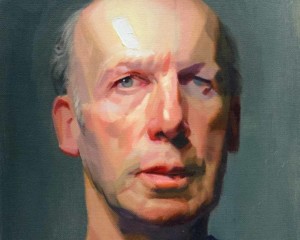
Lesson
Lesson = This Lesson is designed to push the boundaries of colour by assimulating Richard Shmid’s approach to capturing the variety of colour in the face.
Exercise = Study observing the local colours of the face and exaggerated colour mixing.
Model = Referance of Paul.
Homework = Repaint the study to see how much you remember.
Outcome
Students will learn:
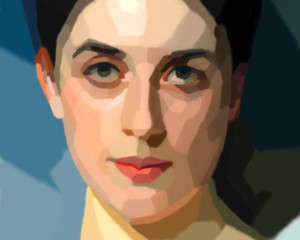
Lesson
Lesson = John Singer Sargent master copy. Now we are starting to refine the colours of the face by copying Sargents lower chroma colours.
Exercise = Break down the portrait in to simple planes of hue, chroma and value used by Sargent
Model = Lady Agnew portrait.
Homework = Repeat the exercise with another master copy.
Outcome
Students will learn:
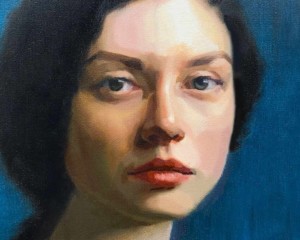
Lesson
Lesson = This lesson is designed to observe and describe the subtlety of colour and tonal relationships by assimilating Sargents approach.
Exercise = Lower the chroma and maintain the planes to describe the form of the face.
Model = Reference of a young girl..
Homework = Repeat the exercise.
Outcome
Students will learn:
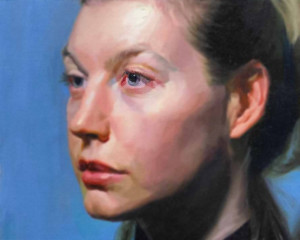
Lesson
Lesson = Softening edges, still observing the planes of the face but refining the variety of edges as when rendering each plane.
Exercise = Observing the variety of edges of each plane ranging from sharp to soft.
Model = Using a portrait model and reference.
Homework = Work on the portrait in their own time.
Outcome
Students will learn:
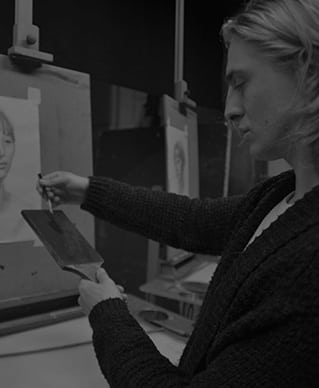
Tone
The tone part of the Online Portrait Painting Course is divided into two parts, drawing and tone.
Drawing
The secret to a successful painting is measuring tone and colour in that order.
First we start with the Sight Size technique which is copying the reference like for like. Once we are comfortable with this measuring technique we then progress to comparative measurements based on proportional units of measurement, this method is used when observing the model from a distance.
Tone
The next step is tone, we will be learning how to observe and describe 3-dimensional form without the distraction or complexity of colour.
Simplification is key, we start by using the model of the Asaro head as an armature to break down the features of the face into simple geometric planes. Training the eye to accurately compare the tonal relationships of each plane is crucial to painting a convincing portrait.
All images of the Online Portrait Painting Course are taken from Louis Smiths demonstrations when delivering each lesson.
Daily Schedule
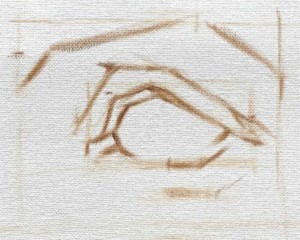
Lesson
Lesson = Students learn how to measure using the Sight Size method, learning how to map the features of the face.
Exercise = Students work from Charles Bargue master copies, then apply this method to the drawing of each feature.
Model = Charles Bargue master copies and photo references of the features.
Homework = Articulate the features of the face.
Outcome
Students will learn:
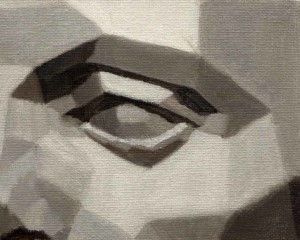
Lesson
Lesson = We will be using the Asaro head as an armature to simplify the features into geometric planes.
Exercise = Learning how to observe and describe form using a step by step process.
Model = Asaro Eye, nose and mouth reference.
Homework = Repeat the steps in class.
Outcome
Students will learn:
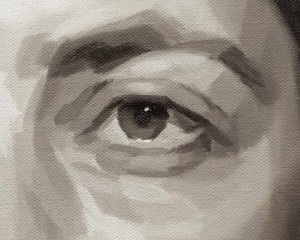
Exercise = Breaking down the form of the eye, nose, mouth and ear into simple planes.
Model = Eye, nose, mouth and ear references.
Homework = Repeat the steps in class.
Outcome
Students will learn:
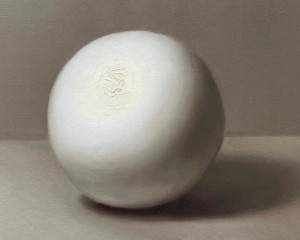
Lesson
Lesson = Understanding the anatomy of light, breaking down the form into its separate tones of highlight, halftone, shadow and cast shadow.
Exercise = Follow the steps listed to illustrate the form of a sphere.
Model = Polystyrene, ball, square and cylinder.
Homework = Repeat the steps in class to illustrate the form of a cylinder.
Outcome
Students will learn:
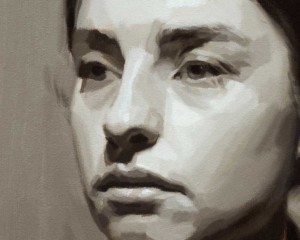
Lesson
Lesson = Put all the main features together to form the triangle of the face. An accurate portrayal of the eyes nose and mouth is important to produce a recognisable face.
Exercise = Working big to small, starting with overall form of head then the features.
Model = Photo reference.
Homework = Practice this technique by painting the head from a different angle.
Outcome
Students will learn:
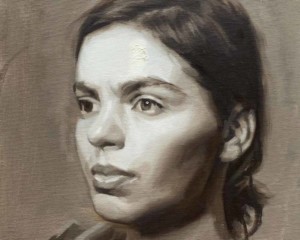
Exercise = Follow the 23 step guide.
Model = Photo reference.
Homework = Repeat all the steps with a different reference photo.
Outcome
Students will learn:
06 Customer(s) recommended this item
Taking up this course was the best decision I made. It was much better than I was expecting for. Not only learned the basic drawing and painting skills, but also in depth knowledgement in terms of form, value and colour in order to succeed in portrait painting. Online lessons are great (otherwise I couldn’t have benefited from this course since I live in Uruguay), Louis helps you to set up your own studio and all the process is well thought.
I feel prepared to work in my personal projects, not only in portrait painting but also in every challenge I may face.
WILL MISS IT!
Thank you for rocketing my skills and confidence to the next level. When I started, I didn’t even know how to hold a paintbrush!
Louis’ online painting course gave me the opportunity and convenience of painting between my homes in London and Spain. I didn’t have any problems working from two locations as Louis guided me through the necessary steps for setting up the equipment in both places. I spent years gaining an art degree (first in university and then years later online after a deferring period)) but sadly my painting experience was very limited and my portraits lacked form and realism.
Louis’ course has given me the confidence to mix accurate colours, tonal ranges and also allowed me to gain experience in painting that I was never taught in university. Louis has developed a structured course that is accessible to all levels and his step by step approach and clear demonstrations mean students acquire the necessary skills to build upon with confidence. Working from very early into the course sight size concepts provide an understanding of planes of the face which enable life like representations of 3D form to be established on the 2D surface of the canvas.
Put simply, I could not have chosen a better course. Louis’ course gave me exactly what I was looking for – a systematic, methodical approach to creating realistic portraits, including the initial drawing stage, blocking in shadow shapes, big form modelling and key features, and a good understanding of tone and colour. Louis is a knowledgeable teacher who has high attention to detail and gives precise and actionable feedback. His zoom set up is well thought through and it gives participants an excellent close up view of his demonstrations. I can’t wait to apply my learning to my own work.
I signed up to Louis’s online course after trying an art school which taught more modern styles, joining this class was the best thing I could have done as you receive a proper painting education here. Louis went above and beyond to help me catch up with the other students and throughout the course was a fantastic mentor. He is always patient and supportive and doesn’t hesitate to answer any questions at all. I feel I have learned a huge amount in this course as before I began I painted a picture of my grandparents which I repainted at the end of the course, the difference was huge showing a greater use of technique and competence. I don’t feel that this progress would have been made if not for Louis’s course. It is a lovely working environment with a great social atmosphere of which as a group we have plans to keep in contact.
This course is what’s been missing from art education for a long time and I would really recommend it to anyone who values painting traditionally.
Leave feedback about this
You must be logged in to post a review.